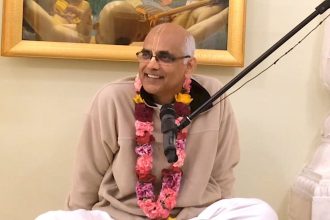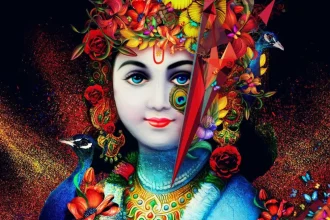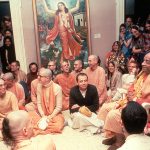The incarnation of Kṛṣṇa, the founder of Buddhism who lived during the 5th century B.C., and appeared to bewilder atheists and dissuade them from performing unnecessary animal sacrifices; Two thousand five hundred years ago, Lord Viṣṇu sent forth an empowered jīva known as the Buddha (the Enlightened One). Assuming the guise of Siddhārtha Gautama, he took birth in Kapilavastu (present-day Nepal) as the son of King Śuddhodana. At age twenty-nine he renounced the world and embarked upon a mission to preach ahiṁsā (nonviolence) and śūnyatā (extinction of the self). He especially opposed the prevailing karma-mīmāṁsā philosophy of his time, which distorted Vedic knowledge and promoted unnecessary animal sacrifice. The Buddha’s teaching rests on four principles: 1) material existence is duḥkha, miserable. 2) There is samudāya, a cause of material existence. 3) Because there is a cause, there is also nirodha, a way to remove material existence. 4) That way is mārga, the path of righteousness that the Buddha himself exemplified. But as he circumvented the distortion of Vedic sacrifice in leading people away from the sin of animal slaughter, he denied the Vedas, the soul, and God. After the Buddha’s disappearance, many schools of Buddhism came into being. See Avatāra (Śaktyāveśa), Buddhism.
Buddha
Raman (Radhika Raman Das) joined ISKCON in 2003 and got initiated by HH Bhakti Caitanya Swami Maharaj in 2011. As the Editor in Chief at "The Vaisnava - Online Magazine", he helps readers around the world hone in their Spiritual Curiosity, express their unique realizations as aspiring Vaisnava writers and enthusiasts, as well as to spread the digital seed of Srila Prabhupada's mission to spread Krishna Consciousness all around the globe.
Leave a Comment











